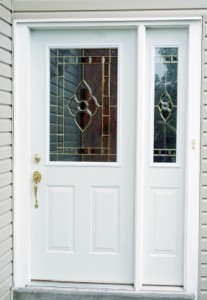 Doors are generally not the energy guzzlers that windows are, simply because there are far fewer of them in a house. But a door can still lose a lot of heat, so making good buying choices on new exterior doors and ensuring all existing doors are well maintained will pay climate change dividends.
Doors are generally not the energy guzzlers that windows are, simply because there are far fewer of them in a house. But a door can still lose a lot of heat, so making good buying choices on new exterior doors and ensuring all existing doors are well maintained will pay climate change dividends.
There are a number of factors to consider when purchasing and installing doors into a new home or when replacing doors in an existing home.
Door purchases
When shopping for a new door, choose the most energy-efficient model you can. Check for:
- Cores of materials that maintain high insulating values
- Frames made from wood, vinyl or thermally broken metal
- High performance weather stripping
- Low air leakage rates (on pre-hung doors)
- High energy ratings for windows in doors
Door installation
When building a new home, consider:
- the prevailing winds; place the door on the leeward side of the house
- Providing windbreaks
- Using an air lock vestibule so cold or hot air is trapped between the exterior door and the house interior
- Installing storm doors, with screen inserts for summer ventilation
Existing homes
To optimize energy efficiency on existing doors, ensure:
- Missing or worn weather stripping is replaced
- Strike plates are properly located
- Door frames fit the door properly
- Doors still contact the stops
- If the door is badly deteriorated, the best option may be to replace the door with a new energy efficient model.




